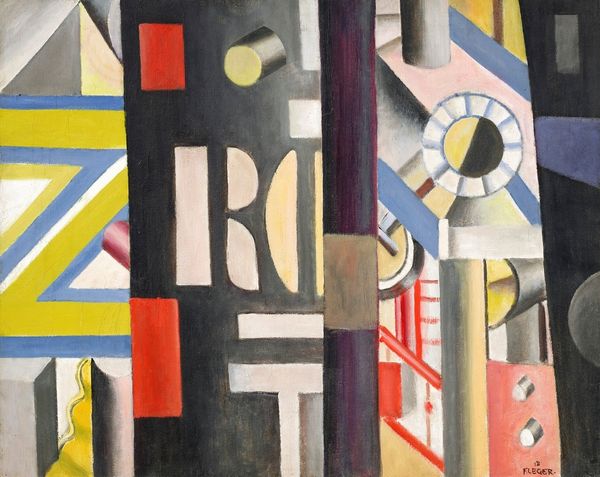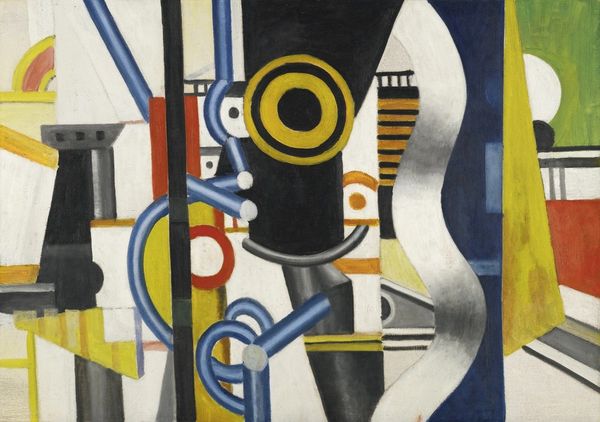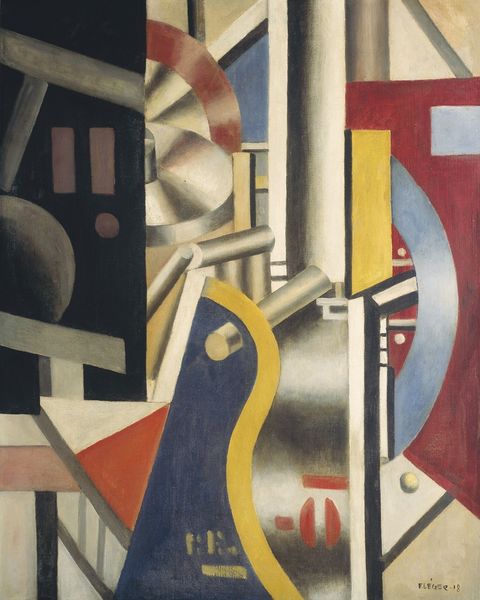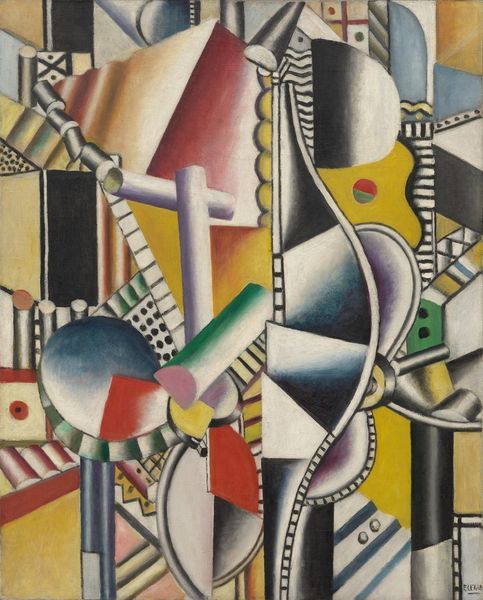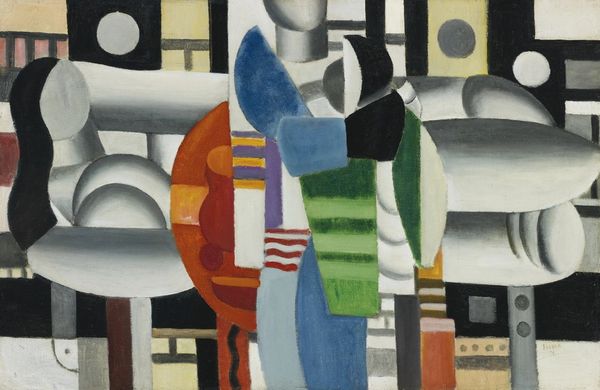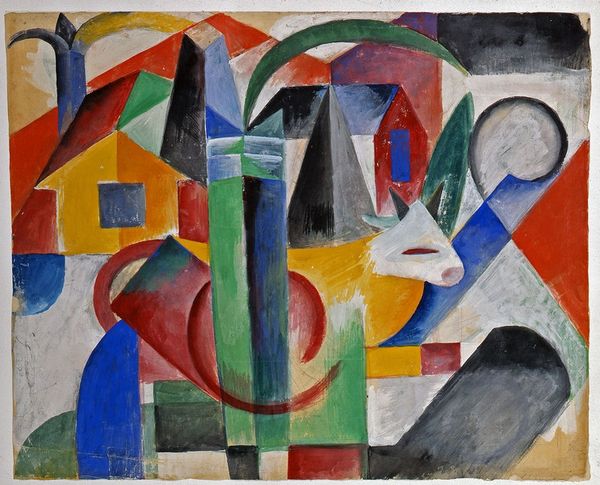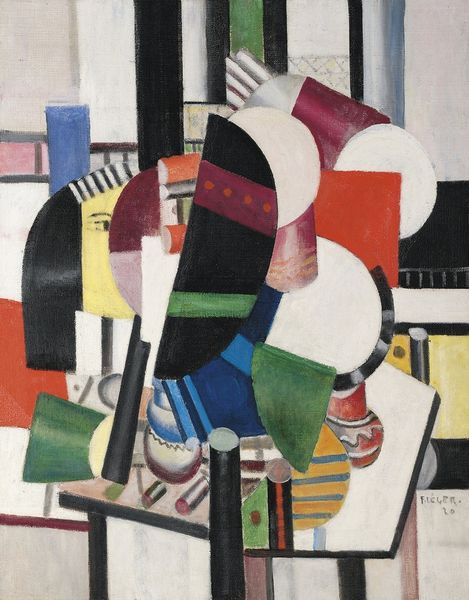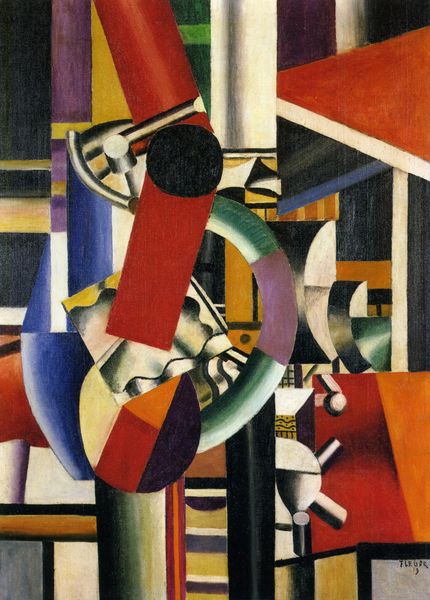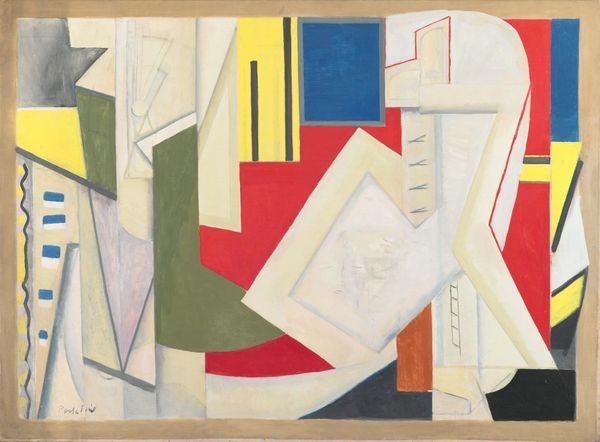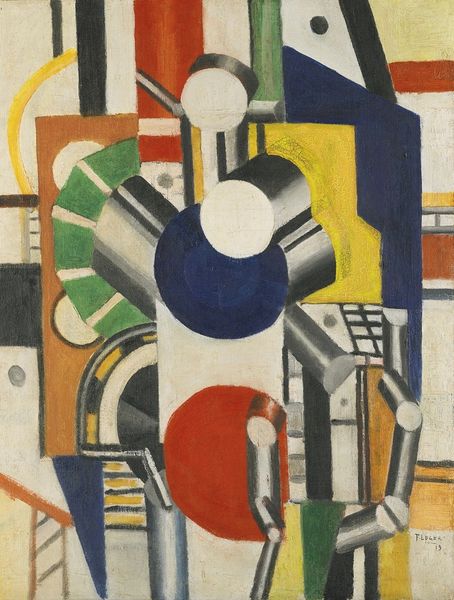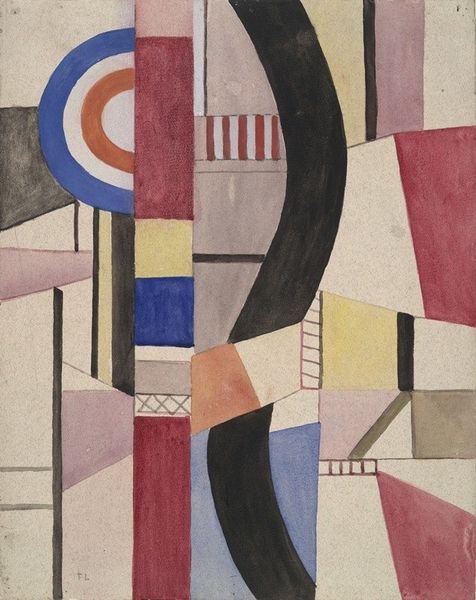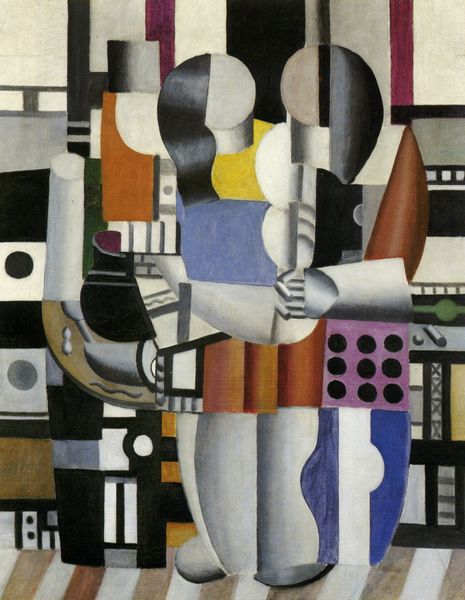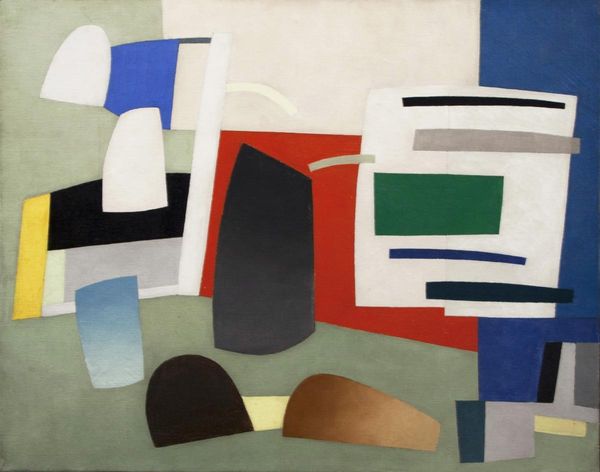
painting, oil-paint
#
cubism
#
painting
#
oil-paint
#
figuration
#
geometric
#
expressionism
#
cityscape
#
modernism
Copyright: Modern Artists: Artvee
Editor: So, this is Fernand Léger’s "The City," painted in 1919. It’s oil on canvas and just overwhelms you with shapes and color. It almost feels chaotic, yet somehow very ordered. What do you see when you look at this painting? Curator: The visual architecture here is truly compelling. Observe how Léger uses geometric forms—rectangles, cylinders, and curves—not to represent the city literally, but to create a visual rhythm, a constructed reality. Note how he avoids traditional perspective, favoring instead a dynamic interplay of planes. The forms almost collide. Editor: So, you’re saying it's not about what the city looks like, but how it feels? Curator: Precisely. It’s a symphony of urban energy translated into pure form and color. Look at the deliberate placement of primary hues—red, yellow, and blue—counterbalanced by black and white. Does it feel random, or meticulously planned? Editor: I see what you mean about it being meticulously planned, especially the contrast between the rounded forms and sharp angles that seem to echo throughout. So, he's using these elements almost like musical notes to create a specific feeling. Curator: Yes, and consider how the hard edges of the geometric shapes seem to push and pull against each other, creating a sense of tension and movement, mirroring the fast-paced life of the city. Do you think the layering creates spatial ambiguity, or an understanding of simultaneity? Editor: Definitely spatial ambiguity, at least for me! Thanks, seeing it broken down that way really changes my perspective. Curator: And it is that very active ambiguity that reveals something new with each look!
Comments
No comments
Be the first to comment and join the conversation on the ultimate creative platform.
